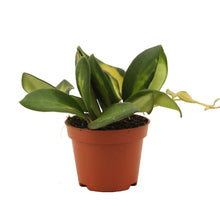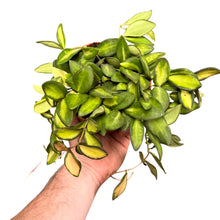Hoya species affinis burtoniae (meaning it's potentially a new, yet-to-be-described species that is very similar, but not identical, to a named species) is sometimes sold under the name Hoya DS-70 which is the accession number given by David Silver to the plant in his collection.
Hoya burtoniae is part of the Apocynaceae family and its native range is Philippines (Luzon). Leaves are ovate and covered with a velvety pubescence. Variegation on this plant ranges from a creamy yellow to pink.
Genus name is new Latin, named after Thomas Hoy ( c. 1750– c. 1821), English gardener.
Light: Bright indirect light, meaning the plant sees the sun for 0-4 hours per day - this could be through trees or a translucent curtain, it’s important for the plant to see the sky in order to thrive.
Water: Given adequate light, keep the potting mix evenly moist, the potting mix is traditionally quite chunky, water will usually flow through quite easily. Pour water slowly over the top of the substrate and allow the water to pass through the drainage holes.
Potting mix: A chunky well-draining mix composed of coco coir, perlite or vermiculite, orchid bark, worm castings and some horticultural charcoal.
Fertilising: Feed your plant every few waterings during the growing season or when you observe active growth. You can dilute fertiliser to half the recommended amount but never add more.
Temperature: 15-35˚C.
Humidity: Hoya would prefer higher humidity, between 60-80% but do well to adapt to average home humidity. You can increase humidity by placing the plant on a watered pebble tray or using a humidifier.
Hoya aren’t considered toxic, however, they may make your pet or child vomit if ingested, keep out of reach just to be safe.



